
27840
27841
27840R
27841R
27840SP
27841SP
27840HS
27841HS
SLx1P and SLx2P Aerial Ampli er
USER GUIDE
Setting up 1
METHOD 1:
Standard Installation For Weak Signal Areas
1. Connect your UHF aerial downlead to the input
socket of the ampli er.
2. Connect the outputs to all TV sets.
TV DISTRIBUTION
1
TV 2
(SLx2P only)
UHF (TV) Aerial
Aerial
ylead
Aerial ylead
Aerial
downlead
TV 1
Philex Customer Careline 08457 573479

METHOD 2:
Video Cassette Recorder (VCR) Playback
1. Connect your UHF aerial downlead to the
RF input socket of the VCR.
2. Connect the RF output lead of the VCR
(usually connected direct to the TV) to your
aerial ampli er IN UHF socket. Both TV and VCR
playback signals will now be available on each
outlet of the ampli er.
3. Connect the outputs to all TV sets.
TV and VCR
DISTRIBUTION
Setting up 2
Aerial ylead
VCR
TV 2
(SLx2P only)
UHF (TV) Aerial
Aerial
ylead
Aerial ylead
Aerial downlead
TV 1
2
TV / VCR DISTRIBUTION

Aerial ylead
VCR
Satellite
Receiver
Satellite output lead
TV 2
(SLx2P only)
UHF (TV) Aerial
Aerial
ylead
Aerial ylead
Aerial downlead
TV 1
3
TV/ VCR /SAT
DISTRIBUTION
Satellite Dish
METHOD 3:
Satellite Receiver Signal Distribution
If you wish to distribute signals from a satellite receiver:
1. Connect your UHF aerial downlead into the satellite receiver’s UHF aerial input.
2. Connect the output lead from a satellite receiver to your ampli er UHF input.
Signals from the receiver can now be watched on all TV sets connected.
3. Alternatively connect the satellite receiver output into your VCR.
4. Connect your VCR output as per METHOD 1. UHF TV, VCR playback and satellite
receiver signals will now be available to all TV sets connected.
5. Connect the outputs to all TV sets.
N.B. It may be necessary to retune the output channel of your VCR when used with a satellite
receiver. Consult your VCR user guide for information.
Use of Gain Control
Gain Control is used to adjust ampli cation for optimum signal strength (0~10db).
Setting up 3

If you are still experiencing reception
problems after the installation of your
SLxP Aerial Amplier, please refer below.
Analogue Terrestrial TV
Snowy Picture
A faint, grainy or snowy picture is generally caused
by a weak signal. Normally the TV transmitter
will be a long way away. A possible improvement
could be made by reducing the aerial downlead
losses, installing a high gain aerial and by adding
a low noise masthead amplier. In a small number
of cases, a snowy picture can also be caused by a
TV signal that is too strong.
‘Herringbone’ Pattern
‘Herringboning’ is generally caused by too strong
a TV signal or by a local high power transmitter
such as CB, amateur or taxi radio. Your TV sound
may be affected as well as the picture. Using an
attenuator will reduce the gain of an aerial signal
and improve the overall picture.
Digital Terrestrial Television
Unlike analogue TV signals that can still be viewed
under weak signal strength conditions, with digital
terrestrial signals blocking/freezing and/or loss
of digital picture and sound can be caused by
insufcient digital signal and carrier to noise ratio.
Similarly blocking and even a completely blank
screen with no sound can result if the input signal
to the set top box is too high. The digital cliff
refers to the rapid change from the picture
and sound being perfect, to disappearing
altogether.
When interconnecting equipment and to
get the best carrier to noise, place the digital
terrestrial television set top box as the rst item
in the signal path followed by any video or
satellite receiver.
Fitting a high gain wideband roof aerial may
also improve the reception and signal quality.
Digital signals are generally immune to
ghosting or multipath reections. They remain
perfectly receivable under conditions where an
analogue signal would suffer ghosting.
For specic help with DTT reception problems,
log onto www.dtg.org.uk.
Digital Satellite Television
With digital reception, a weak signal or
incorrectly aligned dish will cause the picture
and sound to block or disappear. Check both
the alignment of the dish and skew angle of
the LNB.
Intermittent Connections
Make sure all RF cable to connector joints
are tight (both inner and outer) including all
yleads and outlet plate connections.
Troubleshooting
© Philex Electronic Ltd. 2004
If problems persist, please contact
Philex Customer Careline: 08457 573 479
(Local rate – UK only)
Technical Support: http://technical.philex.com
-
 1
1
-
 2
2
-
 3
3
-
 4
4
Philex 27841 User manual
- Type
- User manual
Ask a question and I''ll find the answer in the document
Finding information in a document is now easier with AI
Related papers
Other documents
-
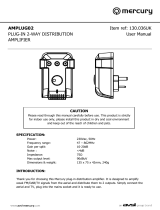 Avsl Mercury AMPLUG02 User manual
Avsl Mercury AMPLUG02 User manual
-
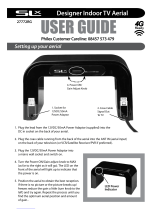 SLX Designer Indoor TV Aerial User manual
SLX Designer Indoor TV Aerial User manual
-
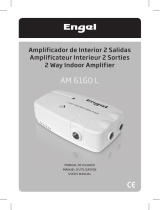 Engel AM6160L User manual
Engel AM6160L User manual
-
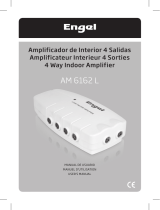 Engel AM 6162 L User manual
Engel AM 6162 L User manual
-
Hitachi D36WF840N User manual
-
Maxview C3006 Operating instructions
-
Arcam Delta 150 NICAM User manual
-
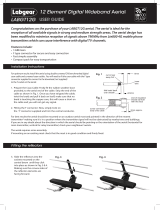 Labgear LABGT12G User guide
Labgear LABGT12G User guide
-
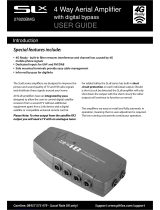 SLX 27820BMG User manual
SLX 27820BMG User manual
-
Panasonic TX32LXD60EB Operating instructions









